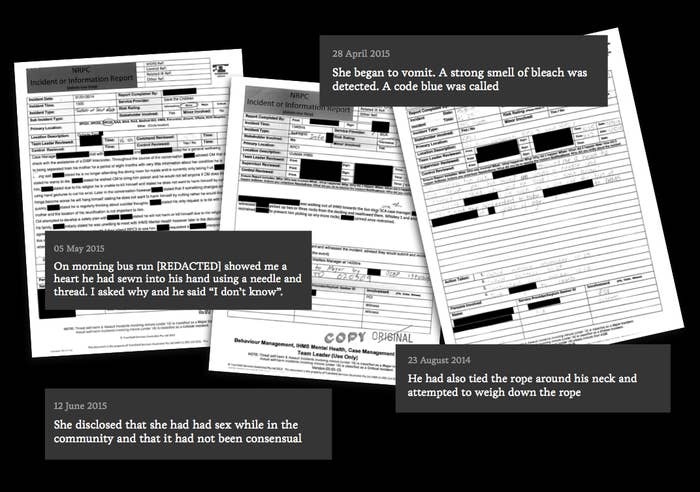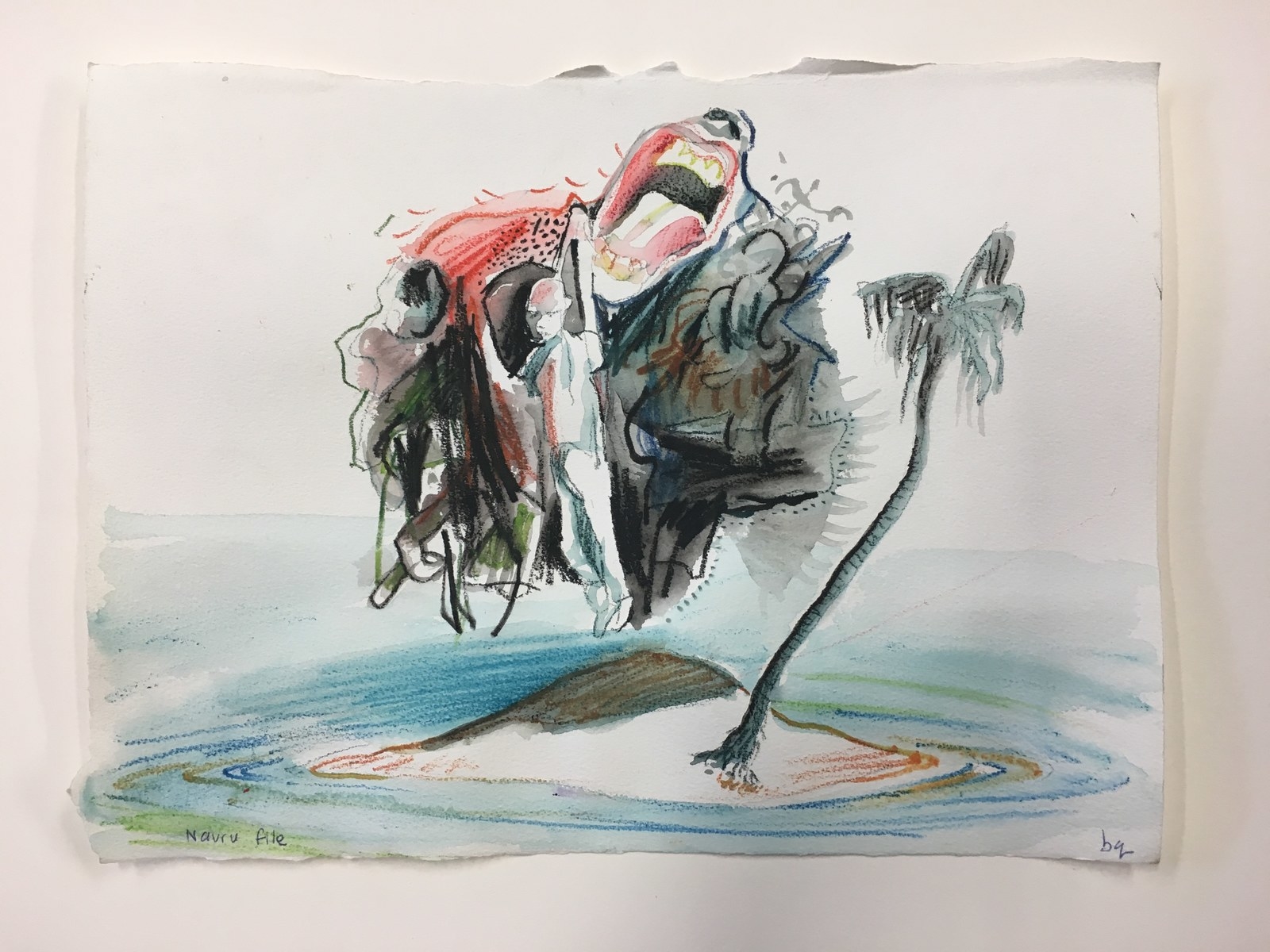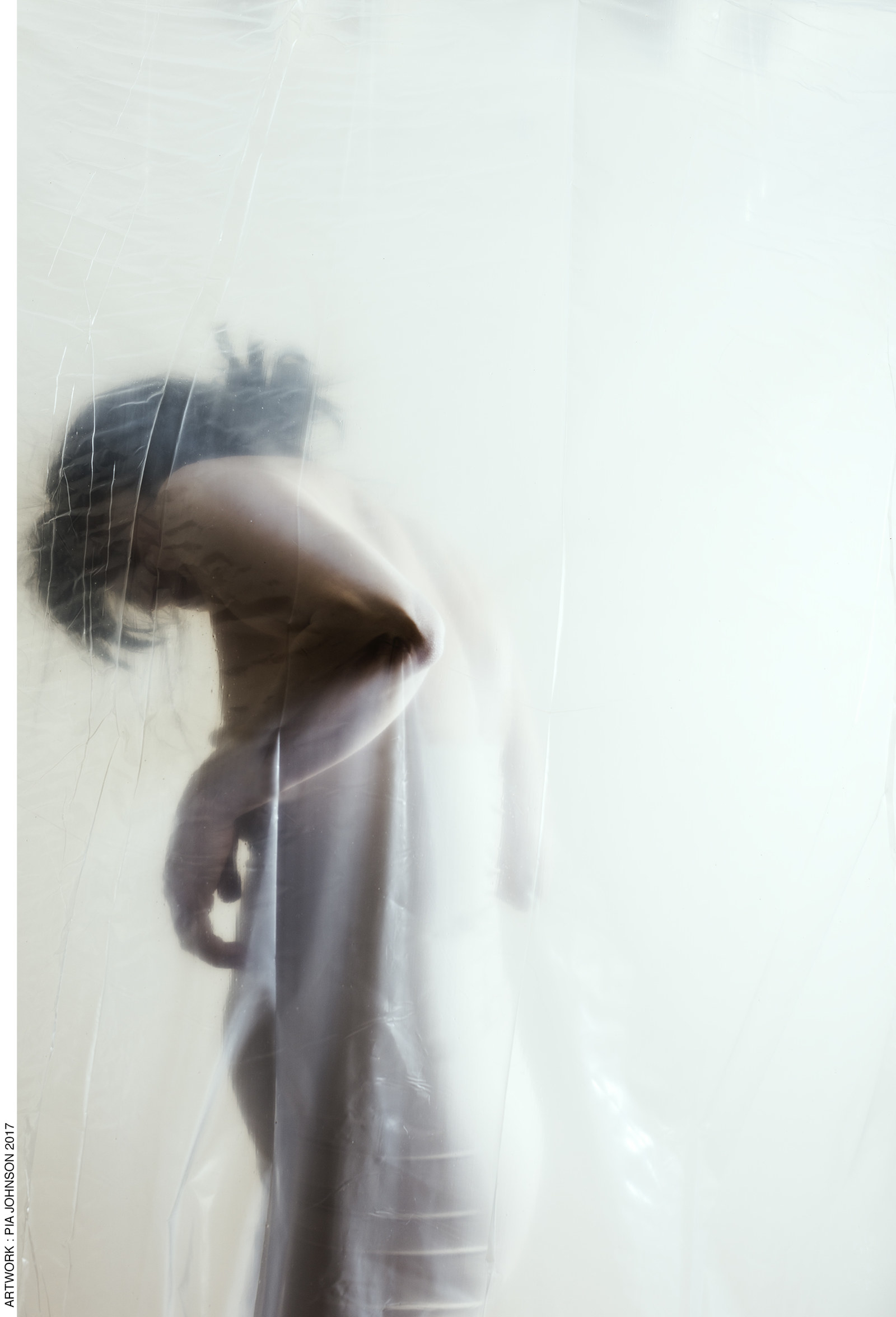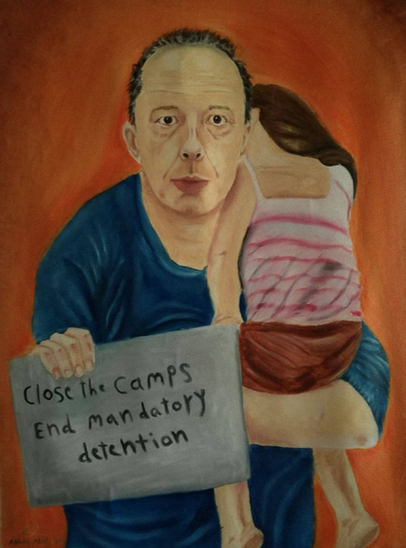Leading Australian artists have brought to life harrowing accounts of abuse and assault on Australia's Pacific detention centre on Nauru in a landmark exhibition.
In August 2016 the Guardian published the Nauru files, the largest cache of leaked documents ever disclosed from inside Australia's immigration detention system. The 2,000 incident reports set out harrowing accounts of abuse, self-harm and sexual assault.
The series sparked a parliamentary inquiry into the government's response to abuse allegations, and was a catalyst for Australia's deal to resettle refugees from Manus Island and Nauru in the United States.
Arielle Gamble and Daniel New were shocked by what the files revealed, and by the words of renowned Australian author Richard Flanagan. In an address to the Melbourne Writers Festival shortly after the files were published, he said they were "an extraordinary trove of anonymous short stories ... Sometimes ... writing can panic us in the same way we are sometimes panicked at the moment of waking: here is the day and here is the world and we can sleep no longer, we must rise and live within it."
Gamble and New wanted to find other ways for people to connect with these stories. They came up with the concept of asking artists to illustrate particular files and reports.
“The concept of this exhibition came from simply being a concerned citizen and wanting to do something to help expose the abuses and inhumane treatment the men, women and children who sought our protection have endured under Australia’s policies,” Gamble said.
“Art is a powerful, visual language. It can override prejudice and fear and speak to the heart. Not everybody connects with words, and we wanted to give people another way in. We want to illustrate these stories through creative expression and use art to shed light on all we can't see.”
All We Can't See opens on Friday at the Yellow House in Potts Point, Sydney. It will showcase the work of 33 artists who took on the task of illustrating the Nauru files.

The contributors include many familiar names from Australia's artistic community including Abdul Abdullah, Janet Laurence, Ben Quilty, Tomislav Nikolic, Tim Maguire and Aida Tomescu.
Each artist has chosen a particular incident report – written by the guards, caseworkers, teachers and child protection workers on Nauru – on which to base an artwork.
Quilty's piece captures a "critical" incident where an asylum seeker attempted to hang himself.

"Post Colonial Australia is built on violent foundations. From the beginning, convict chain gangs labored to construct a society bent on the murderous eviction of Indigenous Australians," he writes in his artist statement. "So, in some ways the Nauru files and the politics that have enabled it should not come as a surprise. I hope that this show can add another voice to those emboldened by compassion."
Pia Johnson's work illustrates one of the most shocking accounts in the files, where an asylum seeker is found sobbing in a classroom: "She reported that she has been asking for a 4 minute shower as opposed to 2 minutes. Her request has been accepted on condition of sexual favours. It is a male security person. She did not state if this has or hasn’t occurred. The security officer wants to view a boy or girl having a shower."

Others artists may be less familiar to Australians; Gamble wanted to make sure that refugees featured among the established artists.
Abbas Al-Aboudi is still detained on Nauru. He has been living there for over four years. Cobbling together paint and canvas, he contributed a moving portrait. In a message, he writes: "I can’t forget this suffering. I can’t forget when I see the children how they suffering here, no future for them here. Our life is stopped, no moving, no developed. I want to understand why Australian government enjoys torturing us like this. We are powerless, we can’t do anything, we can’t talk about our rights."

Ravi, a refugee previously held on Nauru and now living in the Australian community, contributed a poem for the exhibition. He writes:
Quickly....in deep ditch
I am surrounded with some kind of sickness...
It's a suffering called mental illness...
yes...held in the mental cage...and I do war...like a bird singing and crying for flying with free wings...and biting the cage steals...
Yes finally my mental cage was open...but my legs are still tight with mental laws I called your unfair policy
but they say it’s asylum seekers policy ...
but I am still mentally sick...
The exhibition was organised in collaboration Human Rights Watch. Australian director Elaine Pearson said: “About 2,000 men, women and children sought safety and freedom in Australia and instead have languished on Nauru and Manus for more than four years. This is a humanitarian issue and public engagement and awareness is key to creating change.
"People have heard about the Nauru Files, but may not have opted to read these harrowing stories. We want the Australian public to read the files and connect with the human stories.”
The exhibition will run from February 2 to February 10.
If you or someone you know needs help, you can contact Lifeline on 13 11 14 or Beyond Blue on 1300 22 4636.
